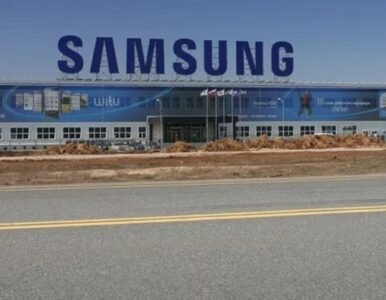In today’s world, it’s hard to imagine life without mobile phones. These devices have become an integral part of our daily lives, connecting us to the world and revolutionizing the way we communicate. But have you ever wondered who made the mobile phone possible? Who are the unsung heroes behind this wireless revolution?
In this article, we will delve into the fascinating world of mobile phone pioneers and explore their invaluable contributions to the development of this groundbreaking technology. From Martin Cooper, the man credited with making the first mobile phone call, to Hedy Lamarr, an actress turned inventor who played a crucial role in wireless communication, we will uncover the stories of these remarkable individuals.
Let’s start by shining a spotlight on Martin Cooper, a visionary engineer who made history on April 3, 1973, when he made the first-ever mobile phone call. Working at Motorola, Cooper was determined to create a portable communication device that would free people from the constraints of wired telephones. His invention paved the way for the mobile phone revolution, forever changing the way we connect with one another.
Martin Cooper
Martin Cooper is widely recognized as the man who made the first mobile phone call, marking a significant milestone in the development of mobile technology. His groundbreaking achievement paved the way for the wireless revolution that we are now immersed in. Cooper’s impact on mobile technology extends beyond that historic phone call.
Cooper was an engineer and executive at Motorola, where he led a team that developed the first handheld mobile phone, known as the Motorola DynaTAC 8000X. On April 3, 1973, Cooper made history by placing a call from a handheld device to Joel Engel, his rival at Bell Labs, who was working on a similar project. This call not only demonstrated the feasibility of mobile communication but also ignited a wave of innovation and competition in the telecommunications industry.
Cooper’s invention revolutionized the way people communicate, untethering them from the constraints of landlines and enabling them to make calls on the go. His vision and determination laid the foundation for the development of smaller, more portable mobile phones, eventually leading to the smartphones we use today. Cooper’s contribution to mobile technology cannot be overstated, and his legacy continues to shape the wireless world we live in.
Hedy Lamarr
Hedy Lamarr, known primarily as a glamorous actress, made significant contributions to the invention of wireless communication. Beyond her Hollywood career, Lamarr’s inventive mind and curiosity led her to explore and innovate in the field of technology.
One of Lamarr’s lesser-known achievements was her groundbreaking invention of frequency hopping. This revolutionary concept involved rapidly switching frequencies to transmit and receive signals, making it difficult for enemies to intercept and jam the communication. Lamarr’s idea was inspired by the piano, where the keys produce different tones when played in rapid succession. She applied this concept to wireless communication, creating a system that laid the foundation for secure and efficient communication systems.
Frequency Hopping
One of the most significant contributions of Hedy Lamarr to modern wireless technology is her groundbreaking invention of frequency hopping. Lamarr, known primarily as an actress, showcased her remarkable intellect and inventiveness by developing a method that would revolutionize wireless communication.
Frequency hopping involves rapidly switching frequencies during transmission, making it difficult for unauthorized individuals to intercept or jam the signal. Lamarr’s invention laid the foundation for secure and efficient wireless communication systems that are widely used today.
To understand the significance of frequency hopping, imagine a crowded room where multiple conversations are taking place simultaneously. Lamarr’s invention can be likened to a person switching between different conversations, making it nearly impossible for eavesdroppers to follow a specific conversation. This innovative technique ensures that wireless communication remains private and secure.
Impact on Communication
Discussing how Lamarr’s frequency hopping invention laid the foundation for secure and efficient wireless communication systems.
Hedy Lamarr’s invention of frequency hopping had a profound impact on the field of communication. By constantly changing the frequency of radio signals, Lamarr’s invention made it incredibly difficult for enemies to intercept and decipher messages. This breakthrough technology formed the basis for secure wireless communication systems that are widely used today.
Before frequency hopping, communication systems were vulnerable to interception and jamming. Lamarr’s invention revolutionized the field by introducing a method that allowed for secure and efficient transmission of information. By rapidly switching between different frequencies, her invention ensured that messages could be transmitted without being easily intercepted or disrupted.
The impact of Lamarr’s frequency hopping invention extends beyond just military applications. It has also played a crucial role in the development of modern wireless technologies, such as Wi-Fi and Bluetooth. These technologies rely on frequency hopping to ensure reliable and secure communication between devices.
In conclusion, Lamarr’s frequency hopping invention has had a lasting impact on communication systems. It laid the foundation for secure and efficient wireless communication, making it possible to transmit information without the fear of interception or disruption. Lamarr’s contribution to the wireless revolution cannot be overstated, and her invention continues to shape the way we communicate today.
Recognition and Legacy
Examining the belated recognition and enduring legacy of Hedy Lamarr as a pioneer in wireless technology. Lamarr’s contributions to the invention of wireless communication were initially overlooked, but her groundbreaking invention of frequency hopping has had a lasting impact on modern wireless technology.
Despite being primarily known as an actress, Lamarr’s brilliance as an inventor was often overshadowed. However, her invention of frequency hopping, which involved rapidly switching frequencies to prevent signal interference, laid the foundation for secure and efficient wireless communication systems. This innovative concept, developed during World War II, was ahead of its time and is now widely used in technologies such as Bluetooth and Wi-Fi.
Lamarr’s recognition as a technological pioneer came much later in her life, but her enduring legacy continues to inspire future generations of inventors. Her contributions to wireless technology have transformed the way we communicate and paved the way for numerous advancements in the field. Lamarr’s story serves as a reminder that innovation can come from unexpected sources and that the unsung heroes of the wireless revolution deserve recognition for their invaluable contributions.
Other Key Contributors
While Martin Cooper and Hedy Lamarr are often recognized for their groundbreaking contributions to the wireless revolution, there were many other unsung heroes who played a crucial role in the development of cellular technology. One such individual is Amos Joel, whose innovative work paved the way for the modern mobile phone.
Amos Joel was an electrical engineer who made significant contributions to the field of telecommunications. He is credited with inventing the concept of cellular telephony, which revolutionized the way we communicate. Joel’s idea was to divide a city into small cells, each equipped with its own tower and frequency. This allowed for more efficient use of the limited radio spectrum and improved signal quality.
To better understand Joel’s contribution, let’s take a closer look at the concept of cellular technology using a table:
| Traditional Telephony | Cellular Telephony |
|---|---|
| Single large coverage area | Divided into small cells |
| Limited capacity | Increased capacity |
| Poor signal quality | Improved signal quality |
As you can see, Amos Joel’s concept of cellular telephony revolutionized the way we communicate by increasing capacity and improving signal quality. Without his contributions, the mobile phones we use today would not be as efficient or widespread.
In conclusion, while Martin Cooper and Hedy Lamarr are often celebrated as pioneers of the wireless revolution, it is important to acknowledge the contributions of other key individuals like Amos Joel. Their innovative ideas and inventions have shaped the mobile technology we rely on today.
Future Innovations
As we continue to witness rapid advancements in mobile technology, it is clear that the wireless revolution is far from over. The future holds exciting possibilities and potential heroes who will shape the landscape of mobile communication. Let’s delve into some of the key areas where innovation is taking place and explore the individuals driving these advancements.
One of the most eagerly anticipated developments in mobile technology is the advent of 5G networks. With its promise of lightning-fast speeds and ultra-low latency, 5G has the potential to revolutionize industries and enable new applications that were previously unimaginable. Visionaries such as [insert names of key individuals] are leading the charge in implementing and innovating this game-changing technology.
As mobile technology continues to evolve, it is increasingly intersecting with artificial intelligence (AI) and the Internet of Things (IoT). AI-powered smartphones and devices are becoming more prevalent, enabling personalized experiences and intelligent automation. Meanwhile, the IoT is connecting everything from household appliances to industrial machinery, creating a network of interconnected devices. Innovators like [insert names of key individuals] are pushing the boundaries in these fields, driving the integration of AI and IoT with mobile technology.
The future of mobile technology is bright, with ongoing advancements paving the way for a wireless revolution that will shape our lives in ways we can only imagine. By exploring the ongoing developments in 5G technology and the convergence of mobile technology with AI and IoT, we can gain insights into the potential heroes who will lead us into this exciting future.
5G Technology
5G technology is the next generation of wireless communication that promises to revolutionize the way we connect and communicate. With its lightning-fast speeds and low latency, 5G is set to unlock a whole new world of possibilities, from autonomous vehicles to smart cities and virtual reality experiences.
Behind the scenes, there are numerous individuals driving the implementation and innovation of 5G technology. These visionaries include engineers, researchers, and industry leaders who are working tirelessly to develop and deploy this groundbreaking technology.
One such individual is Dr. Mischa Dohler, a renowned professor and expert in wireless communications. Dr. Dohler has been at the forefront of 5G research and has made significant contributions to its development. His expertise and dedication have paved the way for the advancements we see today.
Another key figure in the 5G revolution is Cristiano Amon, the President of Qualcomm. Amon has been instrumental in driving the adoption of 5G technology across various industries. Under his leadership, Qualcomm has been at the forefront of developing 5G chips and infrastructure, enabling faster and more reliable connections.
These are just a few examples of the individuals who are shaping the future of 5G technology. Their passion and innovation are driving the implementation and pushing the boundaries of what is possible in the wireless communication landscape.
Artificial Intelligence and Internet of Things
Artificial intelligence (AI) and the Internet of Things (IoT) are two cutting-edge technologies that are revolutionizing the mobile industry. The intersection of mobile technology with AI and IoT opens up a world of possibilities and has the potential to transform the way we live and interact with our devices.
AI-powered mobile applications are becoming increasingly common, allowing smartphones to perform complex tasks and provide personalized experiences. From virtual assistants like Siri and Google Assistant to facial recognition and voice command features, AI enhances the functionality and convenience of mobile devices.
Furthermore, the integration of IoT with mobile technology enables seamless connectivity between devices, creating a network of smart devices that can communicate and share data. This connectivity extends beyond smartphones to include various everyday objects such as smart home appliances, wearables, and even vehicles.
The innovators in these fields are pushing the boundaries of what is possible. Companies like Apple, Google, and Amazon are investing heavily in AI and IoT research and development, constantly striving to improve user experiences and introduce new, innovative features.
As AI and IoT continue to evolve, we can expect even more exciting advancements in mobile technology. From intelligent virtual assistants that anticipate our needs to interconnected smart homes that enhance our daily lives, the future of mobile technology is undoubtedly intertwined with AI and IoT.
Frequently Asked Questions
- Who is credited with making the first mobile phone call?
Martin Cooper is credited with making the first mobile phone call.
- What were Hedy Lamarr’s contributions to wireless communication?
Hedy Lamarr, an actress and inventor, made significant contributions to the invention of wireless communication.
- What is frequency hopping and why is it significant?
Frequency hopping is a groundbreaking invention by Hedy Lamarr that involves rapidly switching frequencies to secure wireless communication. It is significant because it laid the foundation for secure and efficient wireless communication systems.
- Who are some other unsung heroes of the wireless revolution?
Amos Joel is one of the unsung heroes who played a crucial role in the development of cellular technology.
- What are the promising developments in 5G technology?
5G technology offers faster speeds, lower latency, and greater capacity for wireless communication. It is being driven by innovative individuals who are pushing its implementation and innovation.
- How does mobile technology intersect with artificial intelligence and the Internet of Things?
Mobile technology intersects with artificial intelligence and the Internet of Things to create smart and interconnected devices. Innovators in these fields are pushing the boundaries of what is possible.






